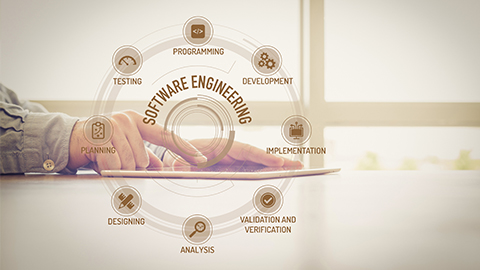Tangible cost refers to the monetary or physical form of the final consumption expenditure. Intangible cost cannot be reflected in accounting measurement, and it is manifested in the impact of audit style and professional ethics on society, mainly referring to the investment of equipment, funds, time, and manpower.
As we've learnt in the 1st unit, economic feasibility study is indispensable in evaluating the effectiveness of a potential software development project. In this phase, it is important to compare the benefits with the costs. In most cases, people arrange costs into two categories: tangible costs and intangible casts.
Let's have a free and open discussion about tangible costs and intangible costs. You may share your understanding of the two different types of costs, talk about the differences between them and give some examples of the two different types of costs to support your idea.
20 回复
-

-

-

To understand these nouns , I combine my own ideas with explanations on the Internet. In my views, I distinguish them with the cost whether can be evaluated clearly. Therefore, the cost is able to count and recording in an account. Besides, I have to metion that tangible costs are defined as the products that go directly into producing an item you sell and the labor your business dedicates to providing a product or service. For the other one, it include some potential losses, as well as the expense out of production
-

-

To understand these nouns , I combine my own ideas with explanations on the Internet. In my views, I distinguish them with the cost whether can be evaluated clearly. Therefore, the cost is able to count and recording in an account. Besides, I have to metion that tangible costs are defined as the products that go directly into producing an item you sell and the labor your business dedicates to providing a product or service. For the other one, it include some potential losses, as well as the expense out of production
-

Formation refers to the monetary or physical form of final consumption expenditure. Intangible costs cannot be reflected in accounting measures, which are manifested in the impact of auditing style and auditing ethics on society, mainly referring to the investment of equipment, funds, time, manpower and so on.
-

A tangible cost is a quantifiable cost of doing business that is connected to a specific source or asset. Tangible costs can relate directly to a physical item used in production or in conducting business operations. The cost of running a business is often discussed in terms of intangible factors such as time, effort and creativity.
-

tangible cost is a quantifiable cost of doing business that is connected to a specific source or asset. Tangible costs can relate directly to a physical item used in production or in conducting business operations. The cost of running a business is often discussed in terms of intangible factors such as time, effort and creativity.
-

-

-

-

Tangible cost is a cost that can be directly quantified and measured, which is related to the use and consumption of material resources, such as raw material cost and equipment depreciation. Intangible costs are difficult to quantify directly, and are related to the use and consumption of intangible resources, such as brand value and R&D investment. Tangible costs can be accurately measured by accounting methods, while intangible costs can't be directly quantified. The difference between them lies in measurability and direct correlation.
-

-

-

-

Tangible cost is a cost that can be directly quantified and measured, which is related to the use and consumption of material resources, such as raw material cost and equipment depreciation. Intangible costs are difficult to quantify directly, and are related to the use and consumption of intangible resources, such as brand value and R&D investment. Tangible costs can be accurately measured by accounting methods, while intangible costs can't be directly quantified. The difference between them lies in measurability and direct correlation.
-

A tangible cost is a quantifiable cost of doing business that is connected to a specific source or asset. Tangible costs can relate directly to a physical item used in production or in conducting business operations. The cost of running a business is often discussed in terms of intangible factors such as time, effort and creativity.
-

Tangible cost is a cost that can be directly quantified and measured, which is related to the use and consumption of material resources, such as raw material cost and equipment depreciation. Intangible costs are difficult to quantify directly, and are related to the use and consumption of intangible resources, such as brand value and R&D investment. Tangible costs can be accurately measured by accounting methods, while intangible costs can't be directly quantified. The difference between them lies in measurability and direct correlation.
-

Formation refers to the monetary or physical form of final consumption expenditure. Intangible costs cannot be reflected in accounting measures, which are manifested in the impact of auditing style and auditing ethics on society, mainly referring to the investment of equipment, funds, time, manpower and so on.
-

A tangible cost is a quantifiable cost of doing business that is connected to a specific source or asset. Tangible costs can relate directly to a physical item used in production or in conducting business operations. The cost of running a business is often discussed in terms of intangible factors such as time, effort and creativity.
添加回复
 您确定给 “0” 位老师发送协议吗?
您确定给 “0” 位老师发送协议吗?





